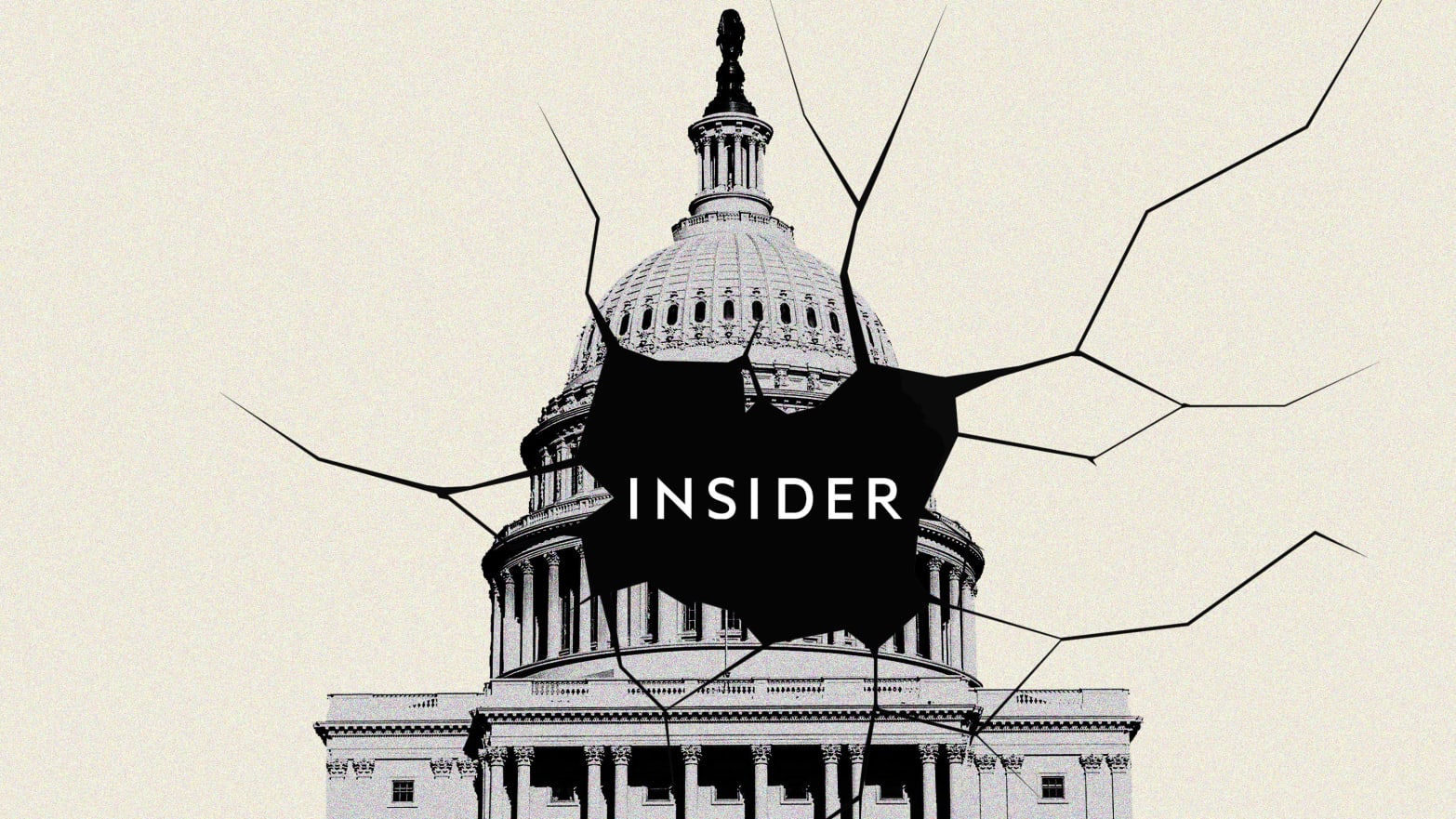In March 2020, when much of the media felt on the brink of collapse, one place that seemed bullish was Insider.
The digital outlet, best known for its tech and business news with clicky headlines—produced at breakneck speed and funded by Axel Springer—was about to launch a brand-new Beltway team focused on original reporting, a break from Insider’s aggregation-centric model.
“Our ambition is to be the world's most beloved and influential journalism brand,” wrote Nicholas Carlson, Insider’s editor-in-chief, in a press release for the new bureau helmed by Darren Samuelsohn, then Politico’s senior White House reporter. “Today we’re announcing a big step in that direction.”
Almost three years later, nearly all of the original Washington, D.C. bureau team is gone. Samuelsohn was fired just days before the 2022 election and a steady stream of staffers have exited over the past year. Insider’s plan to reshape its political coverage turned out to be “one of the more wild rides” in political media, a former staffer declared.
The Daily Beast spoke to 10 current and former members of Insider’s political team, all of whom described conflicting editorial directions, poor management, and constantly shifting goals—all of which contributed to general dysfunction and, ultimately, the collapse of a once-promising bureau. The sources were granted anonymity to speak candidly about their experience.
“We made a big push into DC and politics over the past few years and hired many talented journalists. We are grateful to this team and proud of their coverage,” an Insider spokesperson wrote when reached for comment. “Their great work got a lot of attention from many of our most prestigious competitors for whom political coverage is core to what their audience expects. For us, that’s business and tech.”
Insider was not new to politics. The newsroom already had a politics team in New York City, largely made up of entry-level reporters aggregating breaking news. Traffic was king, as the office frequently reminded staff: TV screens prominently displayed internal analytics at all hours. “You pick up very early on that the way to get praise and recognition is to have a story that’s really high up on Chartbeat,” one former reporter said.
But while New York focused on traffic, Washington was engineered to generate high-impact stories and bring in subscriptions. By August 2020, Samuelsohn put together a team of seven, including reporters who’d covered politics at CNN and the Chicago Sun-Times. By the end of Q1 2021, the team nearly doubled in size.
Coverage around the Jan. 6 Capitol riots proved an early boon; some reporters recalled an ease in meeting subscriber quotas. But as the Trump era faded and a far less scandalous Biden administration took hold, Insider’s subscription goals increased even as audiences dwindled, staffers said. Marquee stories, like a massive oral history of the insurrection—as told by lawmakers, journalists, and police officers who were present—fell well short of Insider’s subscription goals.
“It was just demoralizing,” a former political reporter said.
Further fueling tension was a “too many cooks” problem: Staffers said there were five top editors meddling with the bureau at any given moment, including Carlson himself. With each boss came different opinions on how to cover politics, often straying from a single, coherent editorial strategy.
Additionally, staffers said, Insider brass couldn’t settle on a target audience, confusing the bureau about its objectives. “I frequently asked who the ideal reader was, and no one would really be able to describe it to me,” a former reporter said. “I was just flummoxed for much of my time there.”
A bright spot in 2021 was “Conflicted Congress,” a team-wide, award-winning project tracking each member of Congress’ stock holdings. It was notably not tied to any of Insider’s restrictive traffic- or subscriber-based goals. “It allowed us to do some of the best journalism that Insider has done,” a former senior reporter beamed.
Like what you’re reading? Subscribe to the Confider newsletter here and have The Daily Beast media team’s stellar reporting sent straight to your inbox every Monday night.
But more often the team struggled to meet Insider’s ever-shifting goals. Some D.C. reporters were switched to traffic-based quotas like their New York counterparts. Tying reporter success to subscriptions was “not sustainable,” a top politics staffer said. “The writing was clearly on the wall.”
The shift was “Darren’s attempt to save the bureau,” one former staffer suggested, but it ultimately proved fruitless.
In March 2022, Insider merged both politics teams into one unit chasing traffic over subscriptions—a deeply polarizing move, staffers told The Daily Beast. Some recalled how instead of pursuing original stories, they were more often asked to follow up on clicky articles written overnight by the London and Singapore teams. The stories were frequently wrong or mischaracterized, reporters claimed.
“That was the way it was run for a while,” one reporter said. “I found that to be really, really frustrating and kind of a boneheaded way of doing journalism.”
Frustrations grew as management intensified its traffic focus. That May, executive editor Rebecca Harrington sent a newsroom-wide email with guidance ranging from the innocuous (“Find the Insider angle”) to the explicit (“Play the Chartbeat ‘game’”). The memo, which was reviewed by The Daily Beast, irked many Washington staffers, especially because it encouraged them to avoid topics that didn’t guarantee traffic and to simply “publish more.”
“This company was built on blogging! We still love it!” Harrington wrote.
The approach became, as a former reporter said, “quantity over quality,” which D.C. staffers resented, some openly blaming Samuelsohn. In hindsight, staffers admitted, he was in a difficult position under Insider’s ever-shifting goals and micromanagement. “He was left for almost three years searching for what worked and what didn’t work, and he was put in an impossible position,” a former staffer said. “But it really led to a sort of bad morale among the bureau.”
Exoduses ensued. Top-performing reporters like Adam Wren and Robin Bravender left early in 2022, while the ensuing months saw another wave of exits, including Kayla Epstein and Jake Lahut (now with The Daily Beast). None of the positions were backfilled—a “gutting by attrition,” as multiple staffers described it.
Eventually, eleven days before the midterms, Insider fired Samuelsohn, according to five people familiar with the situation. No reasoning was given for his ouster, but staffers said they were shocked by the abrupt decision to pink-slip the D.C. chief days before a major election.
“I believe I was hired to help the company take a moon shot,” Samuelsohn wrote to The Daily Beast. “Did we make it to the moon? Nope. But we tried. And we made some gigantic steps forward.” He touted the bureau’s accolades and reporters who’ve since joined outlets like Politico and The Washington Post.
The firing all but confirmed for staffers that Insider had become disinterested in political reporting. “We seemed even more directionless,” a current political reporter told The Daily Beast. “Because it’s like, You’re doing this now? Really?” The team powered through the midterms under the direction of multiple editors, including two deputies who’d also depart by year’s end.
It is unclear where Insider politics will go from here. An Insider spokesperson insisted the outlet still plans to cover politics. Staffers, however, are unsure what that will look like.
“I don’t know what Insider wants and I don’t know if Insider knows what it wants,” one current politics reporter said.
Subscribe to Confider, the Daily Beast’s media newsletter, and get juicy scoops in your inbox every week.

